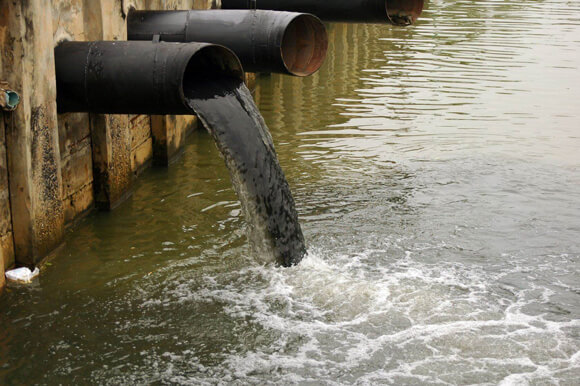Back in 1975, Paul Simon had a hit song called “Fifty Ways to Lose Your Lover.” Today, our tune is that there can be at least “Fifty Ways to Lose Your Nest Egg,” along with your peace of mind, when black water damage is involved.
There are three classifications — or categories — of water damage, and it’s good to understand what you’re up against in each situation, but especially when you are facing the risks black water poses to your health and home.
With this guide, learn how to move forward if you encounter black water damage, including how it needs to be cleaned up, and how your insurance may play a pivotal role in your property’s restoration.
Category 3 water is better known as “black water.” What often causes black water damage is sewage waste, when a filled toilet bowl containing fecal matter overflows, or if contaminated groundwater floods.
Black water is dangerous and associated with a bevy of health risks, as it may contain pharmaceuticals, viruses, environmental pollutants like lawn fertilizers containing herbicides, and other hazardous materials. Exposure to black water can lead to nausea, vomiting, diarrhea, and other adverse health effects.
Due to health risks, cleaning up black water damage requires special handling. Most people are not equipped to avoid contamination, and when it comes to property damage you don’t want to take any chances. As a result, black water damage should be addressed by trained professionals who specialize in restoration.
In addition to black water, the other types of water damage are “clean water” — or Category 1. This is the stuff that is clear, and is what comes from tipped over water glasses, overflowing bathtubs, and leaks from under-sink pipes.
Category 2 water, known as “gray water,” can make you downright sick if you swallow it, or in some cases, if you are exposed to it. Gray water contains a fair amount of contaminants. It also carries micro-organisms along with the things that they enjoy eating. (That means they multiply — yuck!) Examples of gray water are toilets with urine — but no feces in it — that overflow, used dishwater, groundwater seepage and water that goes into a sump pump.
Most insurance companies consider sump and sewer insurance coverage optional, but many insurance agents we talk to are puzzled as to why their clients decline coverage when the rate is, in their opinion, quite reasonable.
We’re puzzled, too, because when it comes to your home and black water damage, the most common cause we’ve seen is sump pump failure. Sump failure begins as gray water, but if it sits for more than 48 hours it becomes black water. It’s urgent to address sump damage right away, and we believe the rate for sump and sewer insurance is quite reasonable, too. After all, you can’t file an insurance claim for Category 3 black water damage if you don’t have adequate coverage.
You can read more about water damage restoration. This is one area people don’t realize they’re more at risk than they think and, in our opinion, it’s a smart move to purchase additional coverage. We’ve seen water damage remediation bills up to $75,000. Know that they can go much higher than that.
If you wonder how this could be, it’s partly because with more knowledge comes more responsibility. Knowledge of the risks of black water damage has grown. So removing it now has many regulations around it to protect the health of those working with it, the homeowner, and the community. The cost of doing it safely involves investing in special equipment, clothing, and protective gear. Then there are chemicals and hazardous waste disposal fees.
Another reason insurance costs are going up is that sewer systems are aging For example, breakdowns are becoming more common in rural Minnesota. Naturally, that means it’s more challenging to find the money to bring infrastructure up to current standards everywhere these days, including metropolitan areas. (There is additional insurance coverage available that can cover the sewer line from a home to the street.)
When things don’t keep moving along in the sewer system, they back up somewhere. You hope that it’s not in your house. But, if that were ever to happen to you, you’ll never regret having taken the time to sort out what coverage would be most important to you.
If you haven’t had a review of your coverage with your insurance agent lately, you may not understand how things have changed. This is one relationship to manage well. You want to be informed about various riders and supplemental policies to determine if they make sense for you. You can’t do it after an event.
When you have a water damage situation, unless you are there when it happens, it’s clean water, and you’re able to clean it up immediately, you are potentially at risk of water moving from Category 1 to 2 and even 3, depending on how much time has elapsed.
The biggest mistake we see at Green Clean, which has served the Twin Cities metro area since 1996, is when homeowners attempt a do-it-yourself fix without understanding what they are dealing with. This is a bad idea — especially when faced with black water damage.
We know what a temptation it is to do as much as possible to save money. There are times, though, where it’s best to call a professional to at least find out what you might be facing. A phone call to learn more from one of our Minnesota-based team members doesn’t cost a dime. Knowledge is power, and it could save you and your family from a world of hurt.
Like us on Facebook
Prev: What is Water Damage Mitigation and Why Are Estimates Difficult to Provide?Next: How to restore a room from cigarette smoke?View All Resources